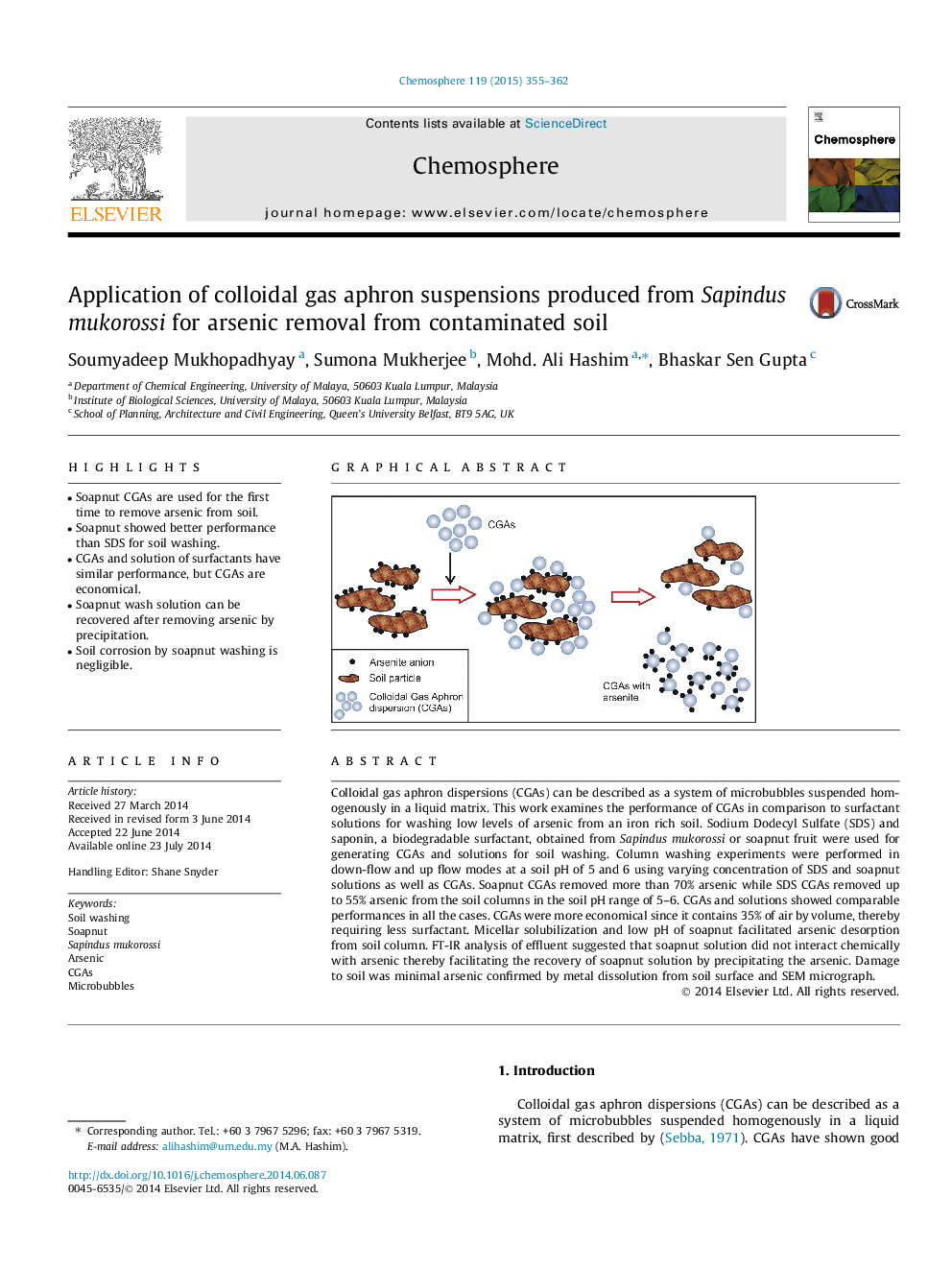| Article ID | Journal | Published Year | Pages | File Type |
|---|---|---|---|---|
| 4408641 | Chemosphere | 2015 | 8 Pages |
•Soapnut CGAs are used for the first time to remove arsenic from soil.•Soapnut showed better performance than SDS for soil washing.•CGAs and solution of surfactants have similar performance, but CGAs are economical.•Soapnut wash solution can be recovered after removing arsenic by precipitation.•Soil corrosion by soapnut washing is negligible.
Colloidal gas aphron dispersions (CGAs) can be described as a system of microbubbles suspended homogenously in a liquid matrix. This work examines the performance of CGAs in comparison to surfactant solutions for washing low levels of arsenic from an iron rich soil. Sodium Dodecyl Sulfate (SDS) and saponin, a biodegradable surfactant, obtained from Sapindus mukorossi or soapnut fruit were used for generating CGAs and solutions for soil washing. Column washing experiments were performed in down-flow and up flow modes at a soil pH of 5 and 6 using varying concentration of SDS and soapnut solutions as well as CGAs. Soapnut CGAs removed more than 70% arsenic while SDS CGAs removed up to 55% arsenic from the soil columns in the soil pH range of 5–6. CGAs and solutions showed comparable performances in all the cases. CGAs were more economical since it contains 35% of air by volume, thereby requiring less surfactant. Micellar solubilization and low pH of soapnut facilitated arsenic desorption from soil column. FT-IR analysis of effluent suggested that soapnut solution did not interact chemically with arsenic thereby facilitating the recovery of soapnut solution by precipitating the arsenic. Damage to soil was minimal arsenic confirmed by metal dissolution from soil surface and SEM micrograph.
Graphical abstractFigure optionsDownload full-size imageDownload as PowerPoint slide
